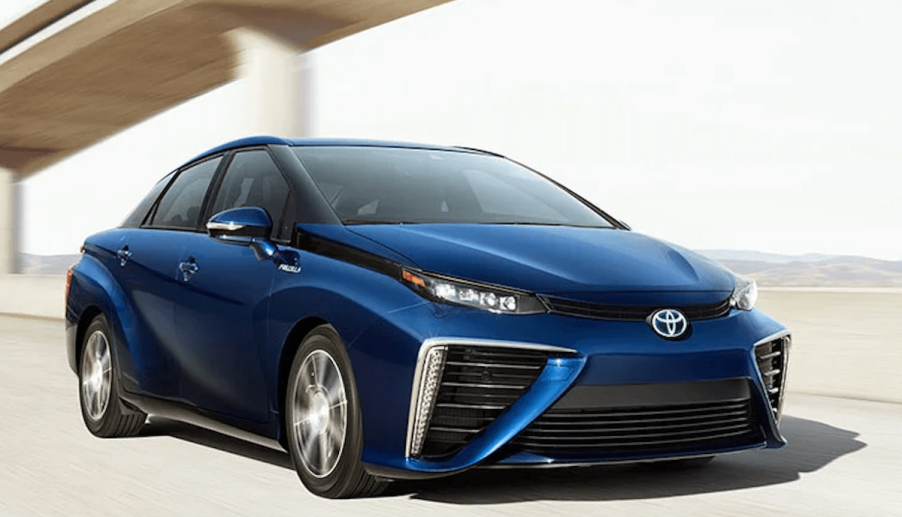
You Can Only Get These Two Vehicles In Highly-Regulated California
In a place like California, cars are under the microscope. Regulations are slowly eliminating diesel-powered vehicles, and gas-powered vehicles are next. But because of this, and because the state is receptive to alternative propulsion vehicles, there are two vehicles you can only purchase there. They’re the hydrogen-powered Toyota Mirai and Mazda MX-30 EV. Both have something in common besides not using gasoline for power.
Are the Mirai and MX-30 compromised?

Both are hardly selling at all in the Eureka state. Since 2015 when it debuted, the Mirai has sold a total of 11,368, as of November 2022, according to GoodcarBadcar. For the MX-30, the numbers are much bleaker. Introduced in 2021, it has sold 505 units.
These are very small numbers, though both are sold globally. That is, except for the 49 states and Canada. Still, they’re overall small numbers. So what’s going on?
Are the Mirai and MX-30 stalking horses?

These two curious vehicles have different reasons for their low sales, and it is factored into their reason for existing. Mazda’s first foray into EVs was with the MX-30. Maybe they were testing the waters, or dipping their toes into the EV zeitgeist, or whatever.
The thrust was to unleash the automaker’s first EV into a friendly environment. Its MX-30 looks great. It looks like a pillarless two-door sedan but with a chunkier look. The MX-30 does have four doors, but the rear doors are cleverly downplayed.
Are hydrogen-powered vehicles the future?

As for the Mirai, it is quite a leap from EVs because it centers around hydrogen power. Hydrogen power presents far more problems for forward-thinking manufacturers than electrification. There are quite a few barriers to mass adoption than where we are at with EVs.
It is not the purpose of this post to drill down on the hurdles to mass hydrogen adoption. But there is a gang of problems with hydrogen becoming the predominant source of future transportation. Production, transportation, storage, and ramping up access are just some of the problems.
Why are there so many questions about the Mirai and MX-30?

But the lure of transportation without carbon emissions is a giant attraction for new car buyers. So here are two new clean vehicles that offer what buyers are looking forward to purchasing, and their sales are tepid. There are two conclusions to what this is about.
First, rolling out EVs like the MX-30 needs to be supported by marketing and charging stations. As for hydrogen power, sources of hydrogen charging that exist beyond Southern California are more than necessary. If access to sources for propulsion doesn’t exist, then how can EV makers expect their products to gain mass acceptance?
So there you have it, two alternative-powered vehicles that show the blockades to the mass adoption of alternative-powered vehicles. It seems so obvious. But we’re just asking questions, not running car manufacturers. Might you have a solution to this quandary?



